
 |
Windows Guide |
Windows has a much improved Task Manager than previous versions of Windows. In Windows 11 or later, you get the full Task Manager, no cut down/simple screen this tome
You can lauch task manager by pressing Ctrl+Alt+Del, right click the task bar and select Task Manager from the pop up menu or type taskmgr from Start, Run menu. You can switch tasks by pressing Alt+Tab together and select a task from the pop up window.
Here is an example of the Processes list in task manager with some running tasks:
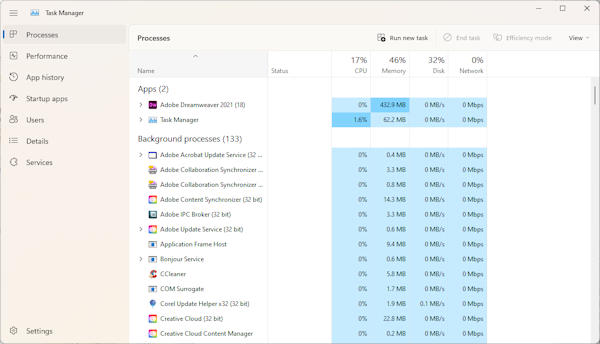
There are two apps: Adobe Dreamweaver, Task Manager. A list of Background processes (131) are shown below the Apps. At the bottom, there is a Settings button for customizing Task Manager
A new task can be started by selecting Run new task , at the top right, and enter name of a program.
The Processes list is more complex than the Application list as it will display background programs and operating system programs which you do not normally see.
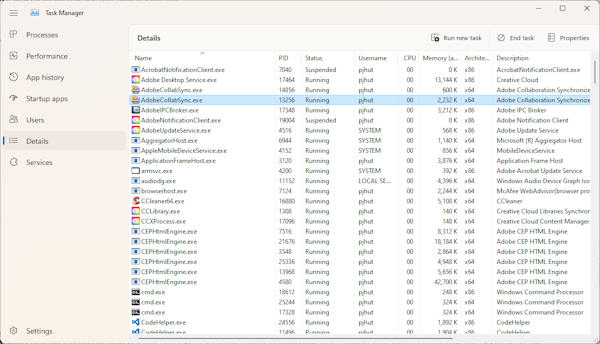
Here you have a number of columns: Name (name of the program file),
PID (process id) , Status, User Name (the account the program runs under e.g. your user id, System,
Local Service or Network Service), CPU (the percentage or Cpu capacity
used),Memory (how much memory the process is using), Architecture (x86 or x64) and Description.. More columns
can be added or removed by right clicking the title bar and selecting Select or Hide Columns.
At the top, you can Run a new task (start a new app), End Task (which allows you to stop a process)
although it is NOT recommended to do this as it can affect the stability
of the system or make it crash. and also Properties You should close normal programs via File,
Exit or click on Close Window gadget. Services should be stopped via the
Services screen from Computer Management, not from here.
The Performance screen will give a graph of how much work your computer is performing and give statistics on cpu, memory, disk and ethernet (network) and GPU.
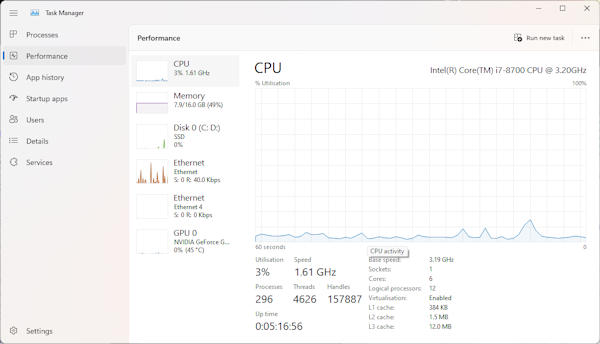
As you can see my CPU is lightly used, memory is also lightly used but has plenty free. For more information, click on the ... (dotS) at the top and open Resource Monitor to view more detailed information on your computer's performance.
This will display a list of Apps (from the Start Menu) and shows how much cpu, network, and notification updates has been performed on them over time. Additional columns are available include Metered network, unmetered network, downloads and uploads.
,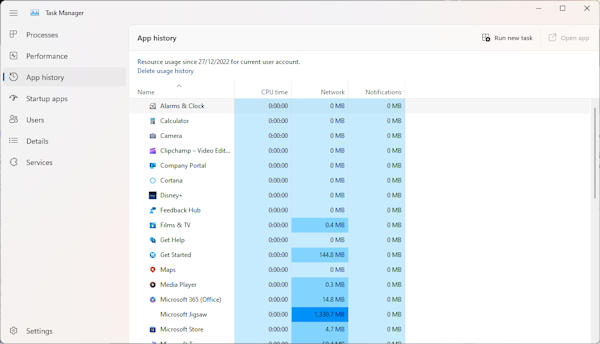
Startup Screen
This lists tasks and programs that are automatically started when you boot up and login. You can change the status of takss from enabled to disabled, if you do not want them to run on startup, speeding up boot and login times.
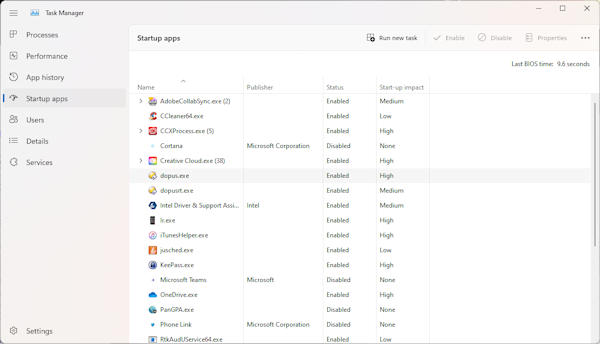
The Users screen will display all the users currently logged in your PC either
directly or through User swtiching or even over a network to look at your shared
files.
Expanding the user will also display the processes associated with that user along with CPU, memory, disk and network statistics.
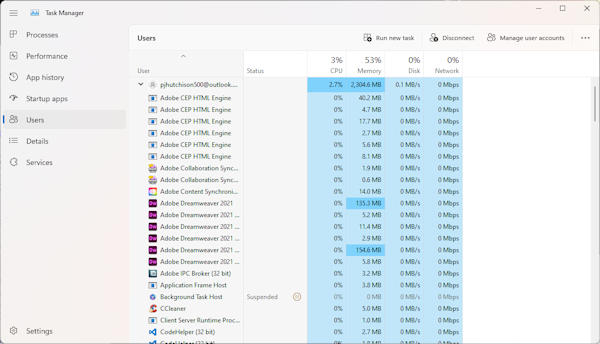
At the top of the screen there a Disconnect button which will logoff any connected users, including yourself. You can also access Manage user accounts properties too.
Services Screen
The final screen displays a list of background services running. You can manage them by clicking on Run new task, Start, Stop, Restart and Open Services at the top.
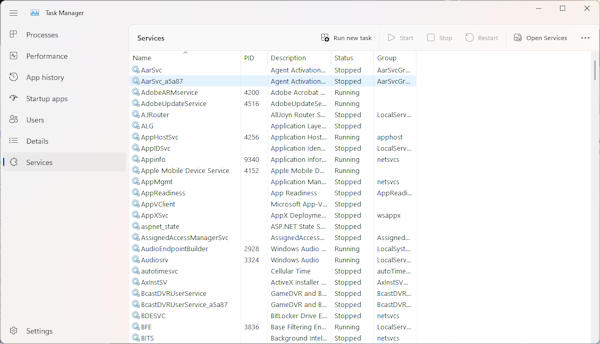
Settings
Default start page - Any of the different task tabs.
Real time update speed - High, normal, low or paused.
Window management
Always on top - Always show Task Manager on top of other windows.
Minimise on use - Minimise window when using other applications.
Hide when minimised - Hide the task manager completely rather than appearing on task bar.
Other options
Show full account name
Show history for all processes